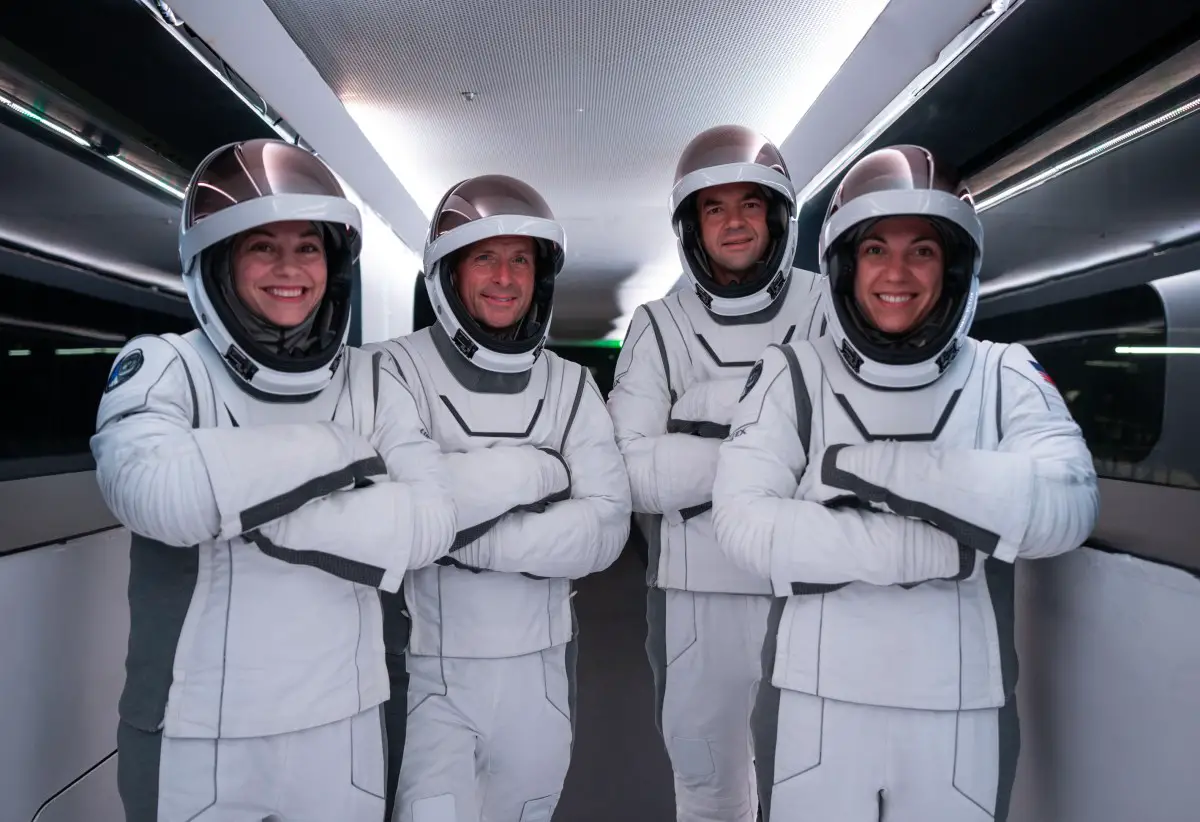Update: The Polaris Dawn launch has been pushed back a day and is now planned for Wednesday, August 28 after a helium leak was detected ahead of its takeoff.
After a nearly three-year interlude, Jared Isaacman is returning to space. The billionaire entrepreneur first went to orbit as part of the Inspiration4 mission, which made history for having a crew comprised entirely of private citizens, not professional astronauts. But with this next mission, Polaris Dawn, he and mission partner SpaceX have set their sights even higher.
Literally: Polaris Dawn will fly farther than any mission using SpaceX’s Dragon capsule to date, while also soaring through portions of the Van Allen radiation belt for the first time since the days of the Apollo missions.
Even more daringly, when the four-person crew reaches around 700 kilometers (435 miles) above Earth, they’ll attempt the first-ever commercial spacewalk — testing Dragon’s ability to support extravehicular activities (EVAs) and giving SpaceX’s EVA suits a spin for the very first time.
This isn’t just a commercial trip sponsored by Isaacman; it’s a joint mission with SpaceX, though the two have never publicly discussed cost.
This mission, as well as the two subsequent missions planned as part of the Polaris Dawn program, including one that will be the first crewed flight of Starship, “are meant to accelerate SpaceX’s vision to make life multi planetary,” Isaacman explained during a news conference earlier this month.
The suits are especially key to SpaceX’s ambition to build the first permanent bases on the moon and Mars. The bases “will require millions of spacesuits,” as the Polaris Dawn website says. The EVA suits that the Polaris Dawn crew will wear are evolved from the intravehicular activity suits astronauts wear inside Dragon capsules, but with a series of upgrades to make them suitable for the vacuum of space. That includes boots constructed from the same thermal material as Dragon’s trunk, a heads-up display for use during the spacewalk and enhanced mobile joints.
The Dragon spacecraft itself also has some upgrades. All four of the crew members will be wearing the EVA spacesuits even though only two crew members will actually exit the spacecraft because the interior will be depressurized prior to the walk. To enable this, SpaceX gave the spacecraft’s life support systems a boost, including adding more oxygen to the system to feed it to all four suits, increased environmental monitoring and an entirely new nitrogen repressurization system.
Like spacewalks conducted by NASA astronauts on the ISS, the Polaris Dawn crewmembers will connect their suits to umbilical cords for life support while they venture outside the craft. To support the crew members further, SpaceX added mobility aids, like handholds around the hatch, for when they venture out and back in. The entire operation, from venting the Dragon to repressurization, will take around two hours, with the two crew members actually outside the craft for 15-20 minutes.
The Polaris Dawn mission will also test Starlink laser-based communications in space, specifically the ability to connect to the Starlink satellite constellation directly from a spacecraft on orbit. The crew will further conduct a slew of science experiments and research with themselves as the subjects. For instance, they’ll be blasting through the high-energy Van Allen belt, measuring the effects of radiation on human health.
“We stand to learn quite a bit from [that environment] in terms of human health science and research,” Isaacman said in that earlier news conference. “If we get to Mars someday, we’d love to be able to come back and be healthy enough to tell people about it, so I think that it’s worthwhile to get some exposure in that environment.”
Isaacman will be joined by three others: mission pilot Scott “Kidd” Poteet, a retired U.S. Air Force Lieutenant Colonel; and two SpaceX employees, mission specialist Sarah Gillis, an engineer and astronaut trainer; and mission specialist Anna Menon, a medical officer who’s also an engineer who runs the company’s mission control for its flights.
Polaris Dawn is now due to take off on a Falcon 9 rocket on August 28 from NASA’s Kennedy Space Center, with a four-hour launch window that opens the same time as the initially-planned launch at 3:38 a.m. EDT. The mission will last up to five days; at the farthest point, the spacecraft will propel the crew to 1,400 kilometers (870 miles) from Earth. At the end of the mission, the crew will splash down off the coast of Florida.
The launch will be streamed live on X; follow along by clicking the link here.
As William Gerstenmaier, former NASA official and now SpaceX’s VP of build flight reliability said during the press conference: “It’s time to explore.”









